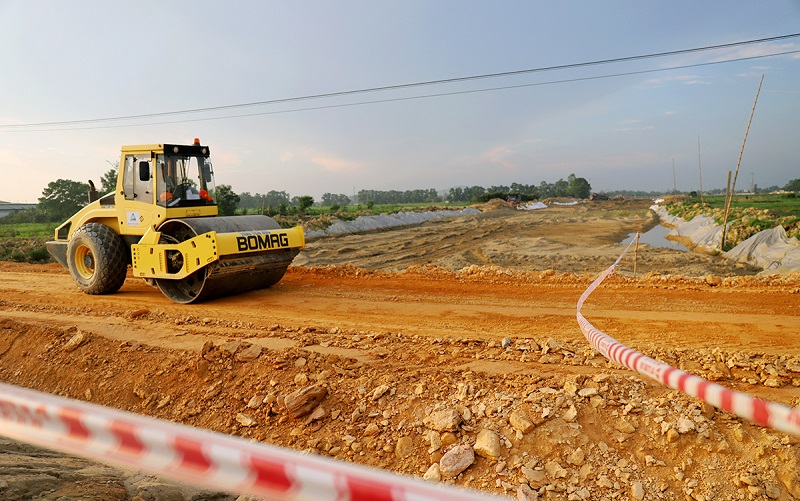Basis for identification of land types in the absence of documents in Vietnam
What are the regulations on basis for identification of land types in the absence of documents in Vietnam?- Hoai Nam (Binh Phuoc)

Basis for identification of land types in the absence of documents in Vietnam (Internet image)
Regarding this issue, LawNet would like to answer as follows:
1. Basis for identification of land types in the absence of documents in Vietnam
(1) The type of a land parcel used in the absence of documents defined in Section 1, 2 and 3, Article 11 of the Land Law shall be identified in the following manner:
- If the land parcel is securely used and is not gained through illegal encroachment, occupation or conversion, its type shall accord with the current form of use;
- If the land parcel is gained through illegal encroachment, occupation or conversion, its type shall be traced from its origin and progress of land management and use.
(2) The type of a land parcel allocated, leased or enabled to be converted by the government shall be identified according to the land use plan, construction plan, urban plan, rural residential area plan and new rural commune development plan, which have been approved by competent government authorities, and the investment project.
(3) The type of a land parcel (on which there is neither garden nor pond) used for various purposes, as prescribed in (1) and (2), shall be identified in the following manner:
- If the boundaries of the segments in different use are specified, the land parcel shall be divided by use and the use of each divided lot is identified.
- If the boundaries of the segments in different use are unspecified, the main purpose of use of the land parcel shall accord with the land type at the highest price in the land price list issued by the People's Committee of the relevant province or central-affiliated city (hereinafter referred to as the provincial People's Committee).
The main purpose of use of a land area for construction of a multi-purpose condominium whose floor area is partly used for offices and commercial establishments shall be residential.
(Clauses 1, 2, 3, Article 3 of Decree 43/2014/ND-CP amended in Decree 01/2017/ND-CP)
2. Authority to identify the type of land in the absence of documents in Vietnam
Provincial People’s Committees shall identify the type of land, as stated in Section 1, being used by
- Religious establishments, foreign-invested companies, diplomatic foreign organizations or Vietnamese expatriates for an investment project.
- People's Committee of a district, township or provincial city (hereinafter referred to as the district-level People's Committee) shall identify the type of land concerning households, individuals, residential communities or Vietnamese expatriates permitted to own residential houses pursuant the legislation on residential housing.
The type of land expropriated shall be identified by the agencies authorized to expropriate such land as per the legislation on land.
Provincial People’s Committee shall identify the type of land over which the authority to identify land type belongs to both the provincial People’s Committee and district-level People's Committee.
(Clause 4, Article 3 of Decree 43/2014/ND-CP amended in Decree 01/2017/ND-CP)
3. What are the types of lands under the law in Vietnam?
Depending on land use purpose, land is classified into the following types:
(1) Agricultural land, including:
- Land for cultivation of annual crops, including paddy land and land for cultivation of other annual crops;
- Land for cultivation of perennial trees;
- Land for production forests;
- Land for protection forests;
- Land for special-use forests;
- Land for aquaculture;
- Land for salt production;
- Other agricultural land, including land used to build greenhouses and other building types for cultivation purpose, including fanning not directly on the land, or to build breeding facilities for cattle, poultry and other animals as permitted by law; land for cultivation, breeding and aquaculture for the purpose of learning, research or experimentation; land for planting and nursing seedlings and breeders, and land for growing flowers and ornamental plants.
(2) Non-agricultural land, including:
- Residential land, including rural residential land and urban residential land;
- Land for construction of offices;
- Land for national defense or security purpose;
- Land for construction of non-business facilities, including land for construction of offices of non-business organizations; land for construction of cultural, social, health, education and training, physical training and sports, science and technology, and diplomatic facilities and other non-business facilities;
- Land for non-agricultural production and business, including land for industrial parks, industrial clusters, export processing zones; land for trading and service; land of non-agricultural production establishments; land used for mining activities; and land for production of building materials, and pottery;
- Land used for public purposes, including land used for transport (including airports, airfields, inland waterway ports, maritime ports, rail system, road system and other transport facilities); irrigation; land with historical-cultural relics or scenic spots; land for community activities or public entertainment and recreation; land for energy facilities; land for post and telecommunications facilities; land for markets; land for waste dumping and treatment, and land for other public facilities;
- Land used by religious institutions;
- Land used for cemeteries, graveyards, funeral service centers and cremation centers; i/ Land with rivers, streams, canals, springs and special-use water surface;
- Other non-agricultural land, including land for motels, tents and camps for workers in production establishments; land for warehouses and houses to store agricultural products, plant protection drugs, fertilizers, machinery and tools for agricultural use, and land for other buildings of land users which are used for non-commercial purposes and not attached to residential land.
(3) Unused land, including land of types for which land use purposes have not been determined yet.
(Article 10 of the Land Law 2013)
Ho Quoc Tuan
- Key word:
- land types
- in Vietnam
- Cases of land rent exemption and reduction under the latest regulations in Vietnam
- Economic infrastructure and social infrastructure system in Thu Duc City, Ho Chi Minh City
- Regulations on ordination with foreign elements in religious organizations in Vietnam
- Increase land compensation prices in Vietnam from January 1, 2026
- Determination of land compensation levels for damage during land requisition process in Vietnam
- Who is permitted to purchase social housing according to latest regulations in Vietnam?
-

- Emergency response and search and rescue organizations ...
- 10:29, 11/09/2024
-

- Handling of the acceptance results of ministerial ...
- 09:30, 11/09/2024
-

- Guidance on unexploded ordnance investigation ...
- 18:30, 09/09/2024
-

- Sources of the National database on construction ...
- 16:37, 09/09/2024
-

- General regulations on the implementation of administrative ...
- 11:30, 09/09/2024
-

- Notable new policies of Vietnam effective as of ...
- 16:26, 11/04/2025
-
.Medium.png)
- Notable documents of Vietnam in the previous week ...
- 16:21, 11/04/2025
-
.Medium.png)
- Notable documents of Vietnam in the previous week ...
- 16:11, 02/04/2025
-
.Medium.png)
- Notable new policies of Vietnam to be effective ...
- 16:04, 02/04/2025
-
.Medium.png)
- Notable new policies of Vietnam effective from ...
- 14:51, 21/03/2025
 Article table of contents
Article table of contents
